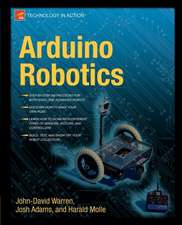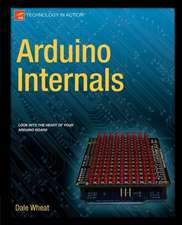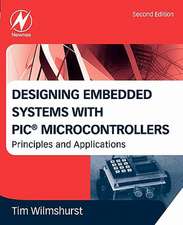The Ergonomics of Computer Pointing Devices: Applied Computing
Autor Sarah A. Douglas, Anant Kartik Mithalen Limba Engleză Paperback – 28 apr 1997
Preț: 331.08 lei
Preț vechi: 413.85 lei
-20% Nou
Puncte Express: 497
Preț estimativ în valută:
63.35€ • 67.75$ • 52.82£
63.35€ • 67.75$ • 52.82£
Carte tipărită la comandă
Livrare economică 18 aprilie-02 mai
Preluare comenzi: 021 569.72.76
Specificații
ISBN-13: 9783540199861
ISBN-10: 3540199861
Pagini: 244
Ilustrații: IX, 233 p. 44 illus.
Dimensiuni: 155 x 235 x 13 mm
Greutate: 0.38 kg
Ediția:1st Edition.
Editura: SPRINGER LONDON
Colecția Springer
Seria Applied Computing
Locul publicării:London, United Kingdom
ISBN-10: 3540199861
Pagini: 244
Ilustrații: IX, 233 p. 44 illus.
Dimensiuni: 155 x 235 x 13 mm
Greutate: 0.38 kg
Ediția:1st Edition.
Editura: SPRINGER LONDON
Colecția Springer
Seria Applied Computing
Locul publicării:London, United Kingdom
Public țintă
ResearchCuprins
1. Introduction.- 1.1 Approach.- 1.2 The Organization of This Book.- 1.3 Importance and Future of Pointing Device Ergonomics.- 2. Human Motor Performance.- 2.1 Fitts’ Law.- 2.2 Psychomotor Models.- 2.3 Other Aspects of Motor Behavior.- 2.4 Summary.- 2.5 Endnotes.- 3. Factors in Applying Psychomotor Studies to Pointing Devices.- 3.1 Devices: Operation, Features and Types.- 3.2 Limb Control.- 3.3 Tasks.- 3.4 Summary.- 4. A Survey of Ergonomic Studies.- 4.1 Studies by Device.- 4.2 Comparison Between Devices.- 4.3 Summary.- 4.4 Endnotes.- 5. Evaluating New Devices: A Case Study.- 5.1 Overview.- 5.2 Introduction.- 5.3 Previous Research.- 5.4 Method.- 5.5 Results.- 5.6 Discussion.- 5.7 Conclusions.- 5.8 Endnotes.- 6. Using the Microstructure of Movement to Understand Device Performance.- 6.1 Introduction.- 6.2 Research Questions.- 6.3 Method.- 6.4 Results.- 6.5 Discussion.- 6.6 Summary and Conclusions.- 6.7 Endnotes.- 7. Performance Models.- 7.1 Historical Background.- 7.2 GOMS.- 7.3 Keystroke Level Model.- 7.4 Stochastic Network Models.- 7.5 Extensions to the GOMS Model Research.- 7.6 Summary.- 7.7 Endnotes.- 8. Challenges of the Present and Future.- 8.1 Review of Pointing Device Research Findings.- 8.2 Integrating Ergonomics Research into Design.- 8.3 Innovations in Pointing Device Technology and Interfaces.- 8.4 Future Research Directions.- 8.5 Conclusions.- 8.6 Endnotes.- 9. Bibliography.

































